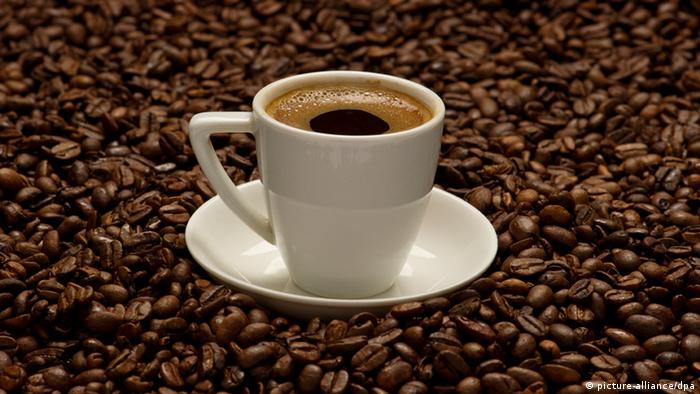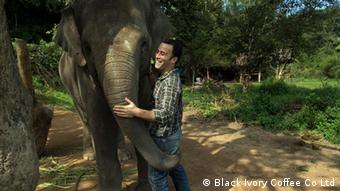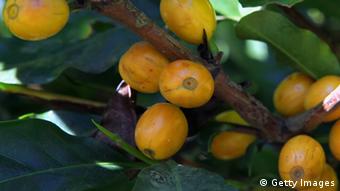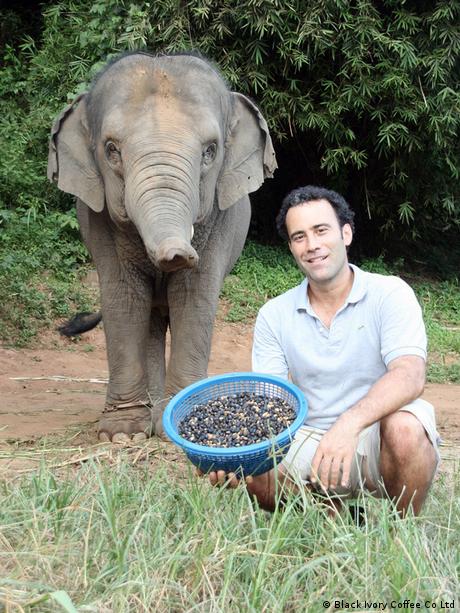A Coffee Withdrawal Diagnosis
Quitting Caffeine Is Now Listed as a Mental-Health Disorder; The Best Ways to Break the Habit
Caffeine is now worthy of two official
diagnoses in the mental health diagnostic manual. Sumathi Reddy looks at
what techniques work to reduce coffee addiction, and why some people
have a harder time quitting than others. Photo: Getty Images.
Kim Leadley didn't think much of her one- or two-a-day Starbucks Grande coffee fix.
But when she tried to go cold turkey to stop the habit, she found
herself getting headaches—excruciating headaches, the
I-can't-work-think-or-function kind of headaches, she says. Within days,
she "fell off the wagon" and resumed the coffee habit.
"The headaches did make me think there was something to be said for
caffeine addiction" and withdrawal, said the 41-year-old Cumberland,
Maine, resident. She started tapering off her caffeine consumption by
mixing decaffeinated and regular coffee. About six months later, she
finally kicked the habit for good after getting pregnant in December.
Caffeine, that most-benign seeming drug of choice that keeps so many
of us fueled through the day, is now the basis of two official diagnoses
in the mental-health bible released in May, with a third brewing for
consideration. The latest version of the American Psychiatric
Association's Diagnostic and Statistical Manual of Mental Disorders,
commonly referred to as DSM-5, includes both caffeine intoxication and
withdrawal. These conditions are considered mental disorders when they
impair a person's ability to function in daily life.
Caffeine intoxication was included as a
diagnosis in the previous version of the manual, known as DSM-IV. But
caffeine withdrawal was upgraded in the current manual to a diagnosis
from a "research diagnosis" previously, meaning it required further
study for inclusion. Also, caffeine use disorder—when a person suffers
troubling side effects and isn't able to quit—was added to the current
manual as a research diagnosis.
The designations didn't come without controversy.
"Caffeine intoxication and withdrawal both occur fairly frequently
but only rarely cause enough clinically significant impairment to be
considered a mental disorder," said Allen Frances, who chaired the task
force that developed the previous version of the DSM and has been a
vocal critic of the latest version. "We shouldn't medicalize every
aspect of life and turn everyone into a patient," he added.
Alan Budney, a member of the DSM-5 Substance-Related Disorders Work
Group, said the research in support of caffeine withdrawal as a
diagnosis is substantial. It is a "clinically meaningful" diagnosis that
could be useful to psychiatrists and other health-care workers seeing
someone experiencing such symptoms, said Dr. Budney, a psychiatry
professor at the Geisel School of Medicine at Dartmouth College.
"The symptoms [of caffeine withdrawal] overlap with a lot of other
disorders and medical problems," said Laura Juliano, a psychology
professor at American University who advised the DSM-5 work group.
"We've heard many times people went to the doctor for chronic headaches
or because they thought that they had the flu and it turns out it was
caffeine withdrawal and they didn't even know it."
Although caffeine is addictive, many studies have found the drug is
associated with some health benefits. Still, some experts say certain
individuals should avoid caffeinated products, such as those with
anxiety, high blood pressure, insomnia and diabetes. People who
experience adverse effects from caffeine, such as the jitters typically
associated with caffeine intoxication, may want to consider at least
scaling back their consumption.
When Kim Leadley of Maine quit coffee cold turkey, the headaches were debilitating.
To be diagnosed with caffeine
withdrawal, a patient must experience at least three of five symptoms
within 24 hours of stopping or reducing caffeine intake: headache,
fatigue or drowsiness, depressed mood or irritability, difficulty
concentrating, and flulike symptoms such as nausea or muscle pain.
OK, who hasn't experienced some of these when they skip that morning cup of Joe?
Here's the caveat though. The symptoms, Dr. Budney stressed, must
cause "clinically significant distress or impairment" that affects your
functioning at work, home or in a social setting.
Caffeine intoxication is defined as having five of a dozen symptoms.
Among these are restlessness, flushed face, nervousness, insomnia,
muscle twitching, irregular heartbeat and rambling flow of thought and
speech. Again, these symptoms must make it extremely hard to function at
work or home. Intoxication can occur at levels in excess of 250
milligrams of caffeine, according to the DSM. But experts say most cases
of intoxication result from much higher doses.
Genetic differences in a liver enzyme affect how quickly people
metabolize caffeine, said Ahmed El-Sohemy, an associate professor in the
Department of Nutritional Sciences at the University of Toronto.
Ridding the body of half the caffeine consumed can take as many as eight
hours for some people, while others may require as few as two. Smoking
speeds up caffeine metabolism, making it about twice as fast, whereas
pregnancy or oral contraceptives slow it down, Dr. El-Sohemy said.
"Some people cannot drink any coffee, half-a-cup of coffee or a Coke
will keep them up at a night," said Jim Lane, a professor of behavioral
medicine at Duke University School of Medicine. However, "if a person
doesn't have any unpleasant symptoms, or any health problems that we
know are affected by caffeine use, then I would not try to suggest that
whatever they consume is too much," he said.
Caffeine-withdrawal symptoms usually kick in about 12 hours after
consumption, peaking at 24 hours, Dr. Lane said. For most people all
symptoms should disappear in about a week, he said. That may be
preferable to spending several weeks slowly cutting back, only to find
that the final step of quitting still leads to withdrawal, he said.
Roland Griffiths, a professor in the department of psychiatry and
neuroscience at Johns Hopkins University School of Medicine, runs an
on-and-off-again clinic for caffeine treatment for patients with
conditions made worse by caffeine consumption. Treatment involves
counseling patients about the amounts of caffeine in various beverages
and food products. Patients graph their daily caffeine intake for a
week. "Then we get them to gradually reduce their caffeine intake over a
period of weeks," said Dr. Griffiths. That can be done by mixing
caffeinated and decaffeinated drinks and cutting caffeine by, say, 25% a
week.
Among regular caffeine drinkers who abstain from caffeine, headache
is reported about 50% of the time and functional impairment about 13%,
said Dr. Griffiths, who advised the DSM-5 work group. But even if people
don't have a headache they may have fatigue or an inability to
concentrate, he said. "That's why I think the prudent and the least
painful way to do it is fade caffeine use out over time."
For people who don't want to completely give up caffeine, but don't
want to be dependent on it, Dr. Juliano of American University
recommends drinking it at irregular intervals, and limiting it to as
close to 100 milligrams as possible.
Dr. Griffiths, of Johns Hopkins, said he has caffeine intermittently,
perhaps once a week, in relatively small doses. "If I'm sleep deprived,
it's a really effective drug. It's very useful if you're not dependent
on it because then it's more powerful and more effective and you don't
have any withdrawal," he said.
Write to Sumathi Reddy at
sumathi.reddy@wsj.com


















